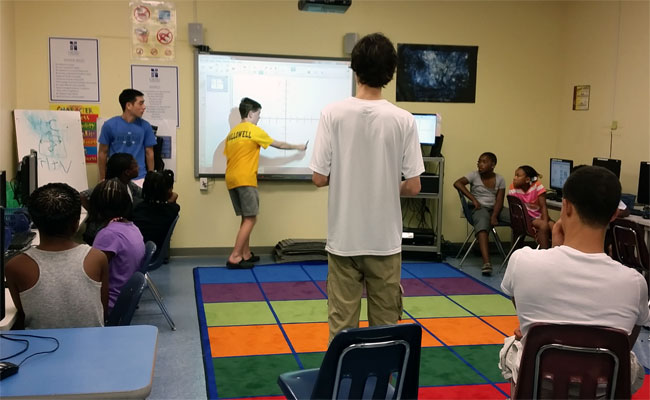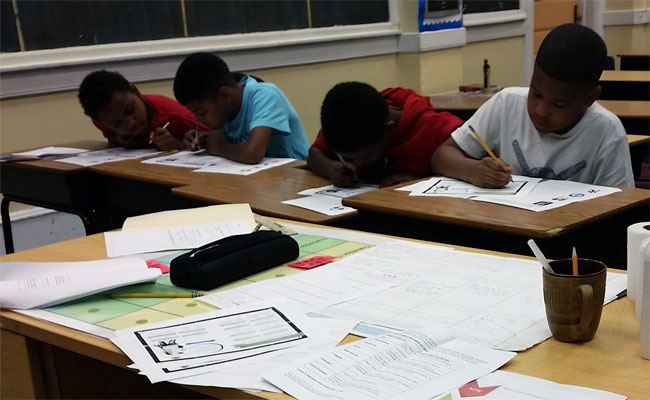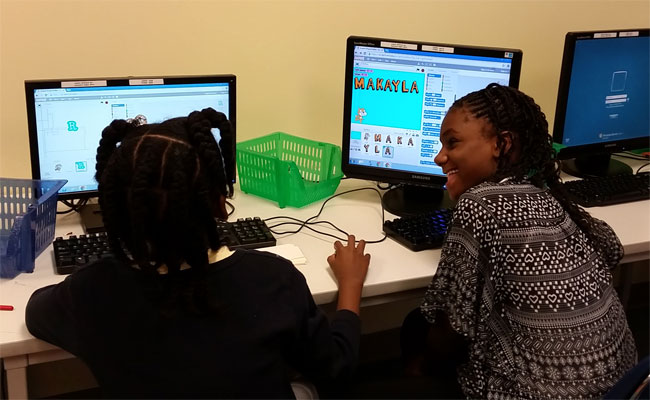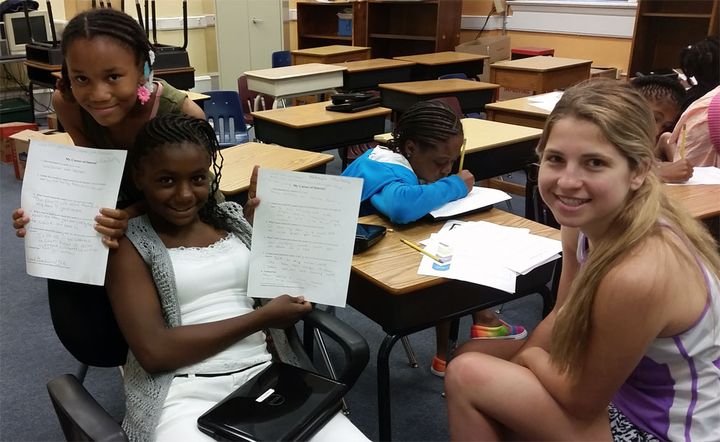
The past week was the first week in which High School HeroesX worked with The Gesu School in North Philadelphia. Before describing the exciting work done between HSHX chapter schools and Gesu students, we want to provide a bit of background on Gesu.
Realizing that it would be quite difficult to see if high school graduation rates were tangibly improving with our work in just one year, HSHX sought to find a school to partner with which already had strong performance in this regard. In so doing, we felt that we could learn from an already strong program, while working with them to find areas which still needed improvement. The Gesu School (K-8) seemed like an ideal partner.
In a city where approximately 65% of public high school students graduate from high school in four years, more than 90% of Gesu alumni graduate high school on time, and of those graduates, 85% go on to college or post-secondary education. Also, as with many of our participating chapters, Gesu finds an importance in single gender education. By working with already high achieving students, HSHX hopes to see what can be done to provide the best platform to not just graduate high school, but graduate it with the tools necessary to thrive in the "outside world". Additionally, we will update shortly our criteria for the winner, which will be found on our challenge page linked above.

To kick off the week, our Penn Charter chapter worked with Gesu 3rd, 4th, and 5th graders in the beginning of a comprehensive Computer Literacy curriculum (photos below). Students were first given a basic real world challenge: how would they get from the Gesu 5th floor computer lab to the outside recess field. In groups, the students had to write the directions on an index card. When the students read aloud their directions, they realized they forgot, as expected, basic instructions such as "to stand up" and "turn the door-knob". The point of the exercise: for students to realize that while coding on a computer, they must state every single detail, no matter how seemingly minute, in order to ensure their instructions will move from thoughts to actions on the computer.
Students then learned how to translate these ideas to the MIT coding program Scratch. Students started by coding for a cartoon fox to move around the screen. By the end of the day they were writing their names on the screens, adding other character movements, and learning how their codes translated on the program. The goal of this curriculum is for the students to learn more about coding, since it is experiencing tremendous growth as a career path, and is extremely applicable to many facets of the 21st century, despite not being heavily taught in traditional education.
Later in the week, the Baldwin School came to Gesu to teach about Career Development (photos below). Using a version of a curriculum generously shared with HSHX by the Netter Center at the University of Pennsylvania, Baldwin, an all-girls school, worked with Gesu female students in grades 3-6 to discuss careers that might interest them. Students talked about different things they use every day, and what occupations might be involved in the production of those items. Students were then assisted by the Baldwin students in filling out worksheets which asked questions such as their favorite school subjects, hobbies, and other interests.

They were then shown websites, such as this one by kids.gov, to further explore careers that might appeal to them. To end the day, students filled out a sheet of a potential career for them, and how they could learn more about it. While the end goal of this curriculum is for students to identify what careers interest them, it is designed to have them spend time examining things such as what subjects that career is intensive in, what level of education one needs to go into it, and if it’s in a growing sector of the economy that is likely to provide many jobs in the future. The Haverford School conducted a near identical curriculum on a separate day, except this time with the boys of those grades.
Our final chapter, the team of Radnor High School and the Agnes Irwin School, was unable to make it to Gesu this past week, but plans on engaging the students in speaking about big issues plaguing society today such as global warming, food, and water. They hope to help the students' public speaking and debate skills while speaking on a peer to peer level.
The Gesu summer program will continue for four more weeks, through July 24th. HSHX hopes that the programs started will continue throughout the next school year as after school programs, and ultimately be implemented with a longer time horizon . Additionally, with the growth of technology ubiquity, Baldwin hopes to continue their relationship with the students through cybermentorship, while Haverford is working on a similar digital mentorship program.









